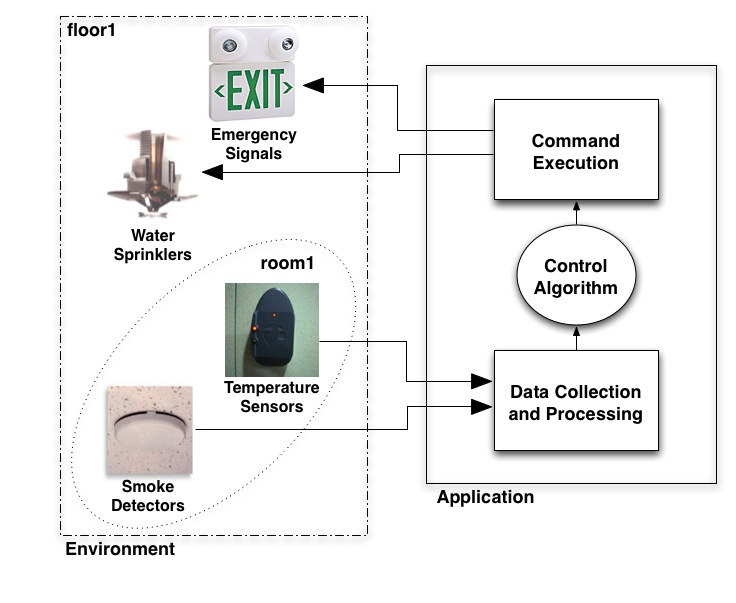Virtual Sensors and Actuators
 Recent trends in wireless sensor network (WSN) applications exhibit
increasing degrees of decentralization. This is particularly true of
scenarios where the data reported by sensors is used to
control
actuators affecting the environment. Implementing this
control loop in a decentralized fashion is much more complex than in
mainstream, single-sink, sense-only applications.
Recent trends in wireless sensor network (WSN) applications exhibit
increasing degrees of decentralization. This is particularly true of
scenarios where the data reported by sensors is used to
control
actuators affecting the environment. Implementing this
control loop in a decentralized fashion is much more complex than in
mainstream, single-sink, sense-only applications.
Virtual sensors and actuators are a programming abstraction simplifying the development of decentralized WSN applications. The data acquired by a set of sensors can be collected, processed according to an application-provided aggregation function, and then perceived as the reading of a single virtual sensor. Dually, a virtual actuator provides a single entry point for distributing commands to a set of real actuator nodes. The set of physical nodes to be abstracted into a virtual one is specified using Logical Neighborhoods. Using virtual nodes, the programmer focuses on the application logic, rather than on low-level implementation details.

The flow of information between real devices and
virtual sensors or actuators. Nodes belonging to the same
logical neighborhood are identified with the same dashed
lines.
The following publications provide further details on the
programming abstraction and supporting run-time:
- Pietro Ciciriello, Luca Mottola, and Gian Pietro Picco. "Efficient Routing from Multiple Sources to Multiple Sinks in Wireless Sensor Networks". In Proceedings of the 4th European Conference on Wireless Sensor Networks (EWSN07), Delft (The Netherlands), January 2007.
- Pietro Ciciriello, Luca Mottola, and Gian Pietro Picco. "Building Virtual Sensors and Actuators over Logical Neighborhoods". In Proceedings of the 1st ACM International Workshop on Middleware for Sensor Networks (MIDSENS06 - colocated with ACM/IFIP/USENIX Middleware), Melbourne (Australia), November 2006.